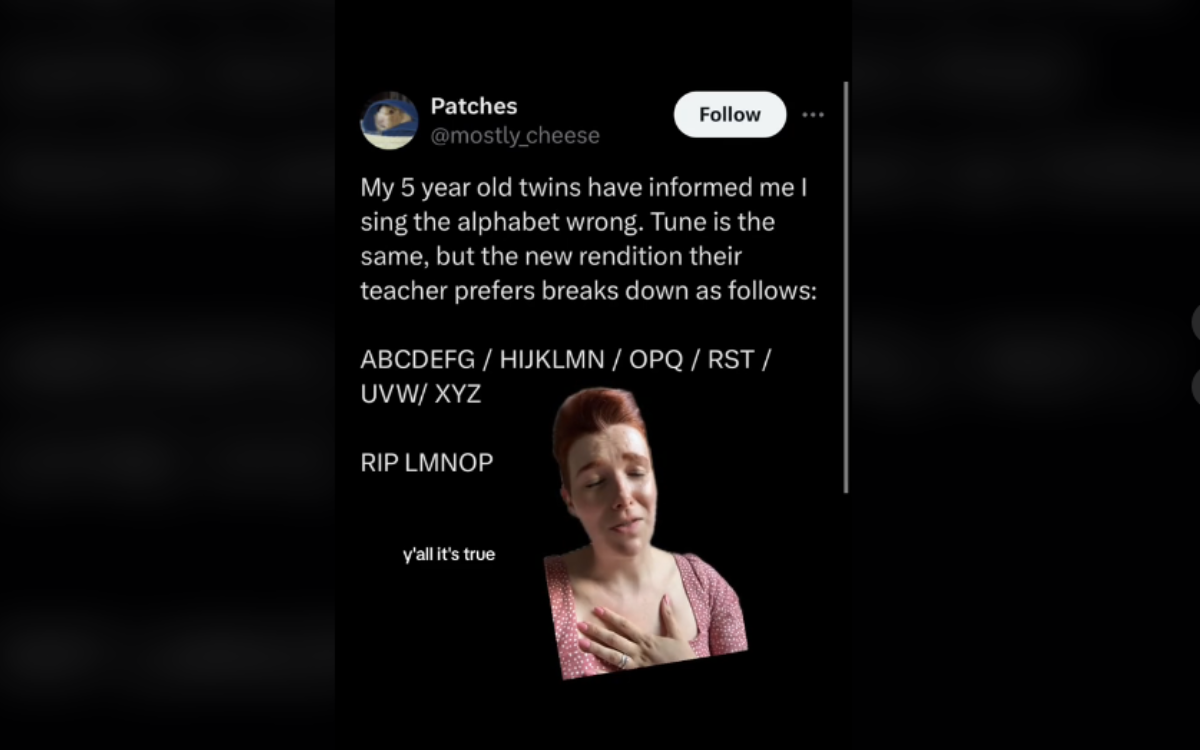An elementary school teacher has shed light on the updated version of the “Alphabet Song” that schools are now teaching, and the rationale behind it.
Understanding letters, their names, and sounds lays the groundwork for children’s literacy development. A study from 2004 in the Journal of Educational Psychology highlighted that a child’s grasp of these elements is a strong predictor of future reading and writing abilities.
That’s why the “Alphabet Song,” sung to the tune of “Twinkle, Twinkle Little Star,” remains a vital tool in nurturing these skills. Rachel, a first-grade teacher from Atlanta with experience in structured literacy and dyslexia, is a strong advocate for its use in her classroom.
In a recent TikTok video, she addressed a trending tweet that suggested the way children sing the “Alphabet Song” has changed. The post by a user named mostly_cheese stated:
“My 5-year-old twins informed me I sing the alphabet wrong. Same tune, but their teacher prefers:
ABCDEFG / HIJKLMN / OPQ / RST / UVW / XYZ.”
Rachel confirmed that this adjustment has been in practice for a good reason. She noted that many of her students struggle particularly when singing ‘LMNOP,’ and many get confused with the letters towards the end of the song due to the traditional “and” between Y and Z.
“If students can’t hear all the letter names, they are missing crucial information,” she explained.
Despite some viewers commenting that the issue stems from children not articulating the letters properly, Rachel disagreed. She emphasized that children are still learning to recognize and manipulate sounds in language, and even a well-enunciated version of the old alphabet song can cause confusion.

TikTok/@teacherrachelsorsel
In her experience, most kids adapt easily to the new version of the song, particularly when they are shown the reasoning behind the change. “They often say, ‘Oh that makes so much sense!’ even those who don’t struggle with learning,” Rachel shared. She believes that if the new, developmentally appropriate version had been taught initially, much of the subsequent intervention would be unnecessary.
While some commenters claimed they grew up fine learning the old version, Rachel advocates for this new approach. “Learning the alphabet song doesn’t equal mastering reading, but quickly naming all the letters is a key early literacy indicator. If kids have trouble with the alphabet, they will likely face challenges in reading,” she pointed out. “Adapting how we teach these foundational skills is essential for developing stronger reading capabilities later on.”
